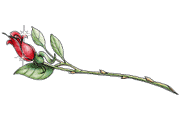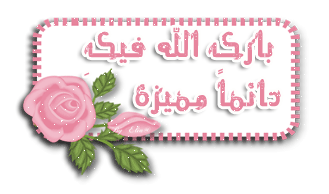#1
أم أمة الله
.::| مديرة عدلات |::.
بيانات العضوة
- رقم العضوية : 87979
- تاريخ التسجيل: 123Apr 2015
- الدولة : مصر
- المدينة : مصر
- الحالة الاجتماعية : متزوجة
- الوظيفة : ليسانس لغة عربية
- المشاركات: 21,568 [+]
- الأصدقاء : 195
- نقاط التقييم : 6850
 Height and width of the sutrah
Height and width of the sutrah
I have read the fatwas on your website regarding the sutrah and I am still confused about the following two items:
a. In terms of height or width, what is the minimum that will be accepted as a sutrah?
b. What is closest and farthest distance can one stand from the sutrah when praying?.
Praise be to Allaah. It is mustahabb for the imam and the one who is praying alone to pray facing a sutrah, because of the report narrated by Abu Dawood (598) from Abu Sa‘eed al-Khudri (may Allah be pleased with him) who said: The Messenger of Allah (blessings and peace of Allah be upon him) said: “When one of you prays, let him pray facing a sutrah and let him draw close to it.” Shaykh al-Albaani (may Allah have mercy on him) said: Its isnaad is hasan saheeh.
It says in al-Mawsoo‘ah al-Fiqhiyyah (24/177): It is Sunnah for the worshipper, if he is praying alone or as an imam, to have a sutrah in front of him that will prevent people from walking in front of him, and to enable him to focus properly on the actions of the prayer. That is because of the report narrated by Abu Sa‘eed al-Khudri (may Allah be pleased with him), that the Prophet (blessings and peace of Allah be upon him) said: “When one of you prays, let him pray facing a sutrah and let him draw close to it and not let anyone pass in front of him.” And because he (blessings and peace of Allah be upon him) said: “Let one of you use a sutrah when praying, even if it is an arrow.”
In the case of one who is praying behind an imam, it is not mustahabb for him to use a sutrah according to scholarly consensus, because the sutrah of the imam is the sutrah of the one who is praying behind him, or because the imam is a sutrah for him. End quote.
Secondly:
The Sunnah is for the worshipper to use something standing as a sutrah, and it is better if it is the height of the back of a saddle or more, because of the report narrated by Muslim (771) from ‘Aa’ishah (may Allah be pleased with her) who said: The Messenger of Allah (blessings and peace of Allah be upon him) was asked about the sutrah for one who is praying and he said: “Like the back of a saddle.” Narrated by Muslim (771).
Al-Nawawi (may Allah have mercy on him) said: In this hadeeth it is recommended to have a sutrah in front of the one who is praying, and it explains that the minimum sutrah is the back of a saddle, which is the length of the forearm, or approximately two thirds of a cubit. This purpose may be served by anything that he sets up in front of him.
End quote from Sharh Muslim by al-Nawawi, 4/216
Ibn Qudaamah (may Allah have mercy on him) said:
With regard to whether it should be thick or thin, there is no definition that we are aware of. It may be thin like an arrow or a spear, or it may be thick like a wall. The Prophet (blessings and peace of Allah be upon him) used to use a short spear as a sutrah. Abu Sa‘eed said: We used to use an arrow or a rock as a sutrah for prayer. And it was narrated from Saburah that the Prophet (blessings and peace of Allah be upon him) said: “Use a sutrah for prayer even if it is an arrow.” Narrated by al-Athram. Al-Awzaa‘i said: An arrow or a whip is sufficient. Ahmad said: And what is broader than that is preferable to me. That is because the words “even if it is an arrow” indicate that something else is more appropriate than it.
End quote from al-Mughni, 2/38
Shaykh Ibn ‘Uthaymeen (may Allah have mercy on him) was asked about the size of the sutrah for one who is praying.
He replied: The best sutrah that a person puts when he prays is the height of the back of a saddle, approximately two-thirds of a cubit, but if it is less than that, it does not matter; even if it is an arrow or a stick, it is acceptable.
End quote from Majmoo‘ Fataawa Ibn ‘Uthaymeen, 13/326
Thirdly:
The Sunnah is for the worshipper to stand close to his sutrah, so that he can stop anyone who tries to walk in front of him, because of the report narrated by Abu Dawood (695) from Sahl ibn Abi Hathmah (may Allah be pleased with him) from the Prophet (blessings and peace of Allah be upon him) who said: “When one of you prays facing a sutrah, let him draw close to it so that the Shaytaan will not interrupt his prayer.” Classed as hasan by Ibn ‘Abd al-Barr in al-Tamheed (4/195); classed as saheeh by al-Nawawi in al-Majmoo ‘ (4/195) and by al-Albaani in Saheeh Abi Dawood.
The scholars (may Allah have mercy on them) differed concerning the distance and from where it should be measured.
Some of them said that the distance is three cubits from the feet of the one who is praying, because the Prophet (blessings and peace of Allah be upon him) prayed in the Ka‘bah with three cubits between him and the wall. Narrated by al-Bukhaari (506). This is the view of the Hanafis, Shaafa‘is and Hanbalis, and it is what may be understood from the words of Maalik, because the distance between the one who is praying and the sutrah should be as much as he needs to stand, bow and prostrate.
See: al-Mawsoo‘ah al-Fiqhiyyah (24/184).
Others were of the view that the distance should be sufficient to allow a sheep to pass, from the place where the worshipper prostrates, because of the report narrated by al-Bukhaari (474) and Muslim (508) from Sahl ibn Sa‘d (may Allah be pleased with him) who said: Between the place where the Messenger of Allaah (blessings and peace of Allah be upon him) prayed and the wall there was a space where a sheep could pass.
Al-Nawawi (may Allah have mercy on him) said: In the hadeeth, Between the place where the Messenger of Allaah (blessings and peace of Allah be upon him) prayed and the wall there was a space where a sheep could pass, what is meant by the place where he prayed is the place where he prostrated. This indicates that the Sunnah is for the one who is praying to be close to his sutrah. End quote.
Some scholars reconcile between the hadeeth of Ibn ‘Umar and that of Sahl ibn Sa‘d (may Allah be pleased with them both) by interpreting the hadeeth of Ibn ‘Umar, which mentions three cubits, as applying when the worshipper is standing, and the hadeeth of Sahl, which mentions a space where a sheep could pass, as applying when the worshipper is prostrating. End quote.
And Allah knows best.



a. In terms of height or width, what is the minimum that will be accepted as a sutrah?
b. What is closest and farthest distance can one stand from the sutrah when praying?.
Praise be to Allaah. It is mustahabb for the imam and the one who is praying alone to pray facing a sutrah, because of the report narrated by Abu Dawood (598) from Abu Sa‘eed al-Khudri (may Allah be pleased with him) who said: The Messenger of Allah (blessings and peace of Allah be upon him) said: “When one of you prays, let him pray facing a sutrah and let him draw close to it.” Shaykh al-Albaani (may Allah have mercy on him) said: Its isnaad is hasan saheeh.
It says in al-Mawsoo‘ah al-Fiqhiyyah (24/177): It is Sunnah for the worshipper, if he is praying alone or as an imam, to have a sutrah in front of him that will prevent people from walking in front of him, and to enable him to focus properly on the actions of the prayer. That is because of the report narrated by Abu Sa‘eed al-Khudri (may Allah be pleased with him), that the Prophet (blessings and peace of Allah be upon him) said: “When one of you prays, let him pray facing a sutrah and let him draw close to it and not let anyone pass in front of him.” And because he (blessings and peace of Allah be upon him) said: “Let one of you use a sutrah when praying, even if it is an arrow.”
In the case of one who is praying behind an imam, it is not mustahabb for him to use a sutrah according to scholarly consensus, because the sutrah of the imam is the sutrah of the one who is praying behind him, or because the imam is a sutrah for him. End quote.
Secondly:
The Sunnah is for the worshipper to use something standing as a sutrah, and it is better if it is the height of the back of a saddle or more, because of the report narrated by Muslim (771) from ‘Aa’ishah (may Allah be pleased with her) who said: The Messenger of Allah (blessings and peace of Allah be upon him) was asked about the sutrah for one who is praying and he said: “Like the back of a saddle.” Narrated by Muslim (771).
Al-Nawawi (may Allah have mercy on him) said: In this hadeeth it is recommended to have a sutrah in front of the one who is praying, and it explains that the minimum sutrah is the back of a saddle, which is the length of the forearm, or approximately two thirds of a cubit. This purpose may be served by anything that he sets up in front of him.
End quote from Sharh Muslim by al-Nawawi, 4/216
Ibn Qudaamah (may Allah have mercy on him) said:
With regard to whether it should be thick or thin, there is no definition that we are aware of. It may be thin like an arrow or a spear, or it may be thick like a wall. The Prophet (blessings and peace of Allah be upon him) used to use a short spear as a sutrah. Abu Sa‘eed said: We used to use an arrow or a rock as a sutrah for prayer. And it was narrated from Saburah that the Prophet (blessings and peace of Allah be upon him) said: “Use a sutrah for prayer even if it is an arrow.” Narrated by al-Athram. Al-Awzaa‘i said: An arrow or a whip is sufficient. Ahmad said: And what is broader than that is preferable to me. That is because the words “even if it is an arrow” indicate that something else is more appropriate than it.
End quote from al-Mughni, 2/38
Shaykh Ibn ‘Uthaymeen (may Allah have mercy on him) was asked about the size of the sutrah for one who is praying.
He replied: The best sutrah that a person puts when he prays is the height of the back of a saddle, approximately two-thirds of a cubit, but if it is less than that, it does not matter; even if it is an arrow or a stick, it is acceptable.
End quote from Majmoo‘ Fataawa Ibn ‘Uthaymeen, 13/326
Thirdly:
The Sunnah is for the worshipper to stand close to his sutrah, so that he can stop anyone who tries to walk in front of him, because of the report narrated by Abu Dawood (695) from Sahl ibn Abi Hathmah (may Allah be pleased with him) from the Prophet (blessings and peace of Allah be upon him) who said: “When one of you prays facing a sutrah, let him draw close to it so that the Shaytaan will not interrupt his prayer.” Classed as hasan by Ibn ‘Abd al-Barr in al-Tamheed (4/195); classed as saheeh by al-Nawawi in al-Majmoo ‘ (4/195) and by al-Albaani in Saheeh Abi Dawood.
The scholars (may Allah have mercy on them) differed concerning the distance and from where it should be measured.
Some of them said that the distance is three cubits from the feet of the one who is praying, because the Prophet (blessings and peace of Allah be upon him) prayed in the Ka‘bah with three cubits between him and the wall. Narrated by al-Bukhaari (506). This is the view of the Hanafis, Shaafa‘is and Hanbalis, and it is what may be understood from the words of Maalik, because the distance between the one who is praying and the sutrah should be as much as he needs to stand, bow and prostrate.
See: al-Mawsoo‘ah al-Fiqhiyyah (24/184).
Others were of the view that the distance should be sufficient to allow a sheep to pass, from the place where the worshipper prostrates, because of the report narrated by al-Bukhaari (474) and Muslim (508) from Sahl ibn Sa‘d (may Allah be pleased with him) who said: Between the place where the Messenger of Allaah (blessings and peace of Allah be upon him) prayed and the wall there was a space where a sheep could pass.
Al-Nawawi (may Allah have mercy on him) said: In the hadeeth, Between the place where the Messenger of Allaah (blessings and peace of Allah be upon him) prayed and the wall there was a space where a sheep could pass, what is meant by the place where he prayed is the place where he prostrated. This indicates that the Sunnah is for the one who is praying to be close to his sutrah. End quote.
Some scholars reconcile between the hadeeth of Ibn ‘Umar and that of Sahl ibn Sa‘d (may Allah be pleased with them both) by interpreting the hadeeth of Ibn ‘Umar, which mentions three cubits, as applying when the worshipper is standing, and the hadeeth of Sahl, which mentions a space where a sheep could pass, as applying when the worshipper is prostrating. End quote.
And Allah knows best.
Islam Q&A



إظهار التوقيع
توقيع : أم أمة الله
التوقيع لا يظهر للزوار ..
- مشاركات أم أمة الله
- عدد المواضيـع :
- عدد الـــــــردود :
- المجمــــــــــوع : 21,568
- أم أمة الله
- مشاهدة ملفه الشخصي
- إرسال رسالة خاصة إلى أم أمة الله
- مشاركات مريم 2
- عدد المواضيـع :
- عدد الـــــــردود :
- المجمــــــــــوع : 9,225
#3
حياه الروح 5
عضوة مـآسية
 رد: Height and width of the sutrah
رد: Height and width of the sutrah
جزاكي الله خيرا حبيبتي
إظهار التوقيع
توقيع : حياه الروح 5
التوقيع لا يظهر للزوار ..
- مشاركات حياه الروح 5
- عدد المواضيـع :
- عدد الـــــــردود :
- المجمــــــــــوع : 85,489
- حياه الروح 5
- مشاهدة ملفه الشخصي
- إرسال رسالة خاصة إلى حياه الروح 5
- مشاركات نور الأصيل
- عدد المواضيـع :
- عدد الـــــــردود :
- المجمــــــــــوع : 963
 قد تكوني مهتمة بالمواضيع التالية ايضاً
قد تكوني مهتمة بالمواضيع التالية ايضاً
|
||||
| الموضوع | كاتب الموضوع | المنتدى | مشاركات | آخر مشاركة |
| عمرك شوفتي 83 مجله كروشيه برابطين اتنين بس!!!! ادخلي وشوفي بنفسك | baby_kitty | الخياطة والكروشية والتريكو | 16 | 20-03-2016 01:54 PM |
الساعة الآن 05:08 PM
جميع المشاركات تمثل وجهة نظر كاتبها وليس بالضرورة وجهة نظر الموقع




